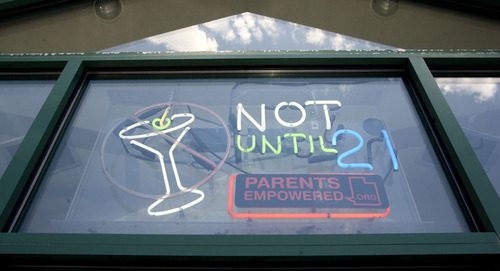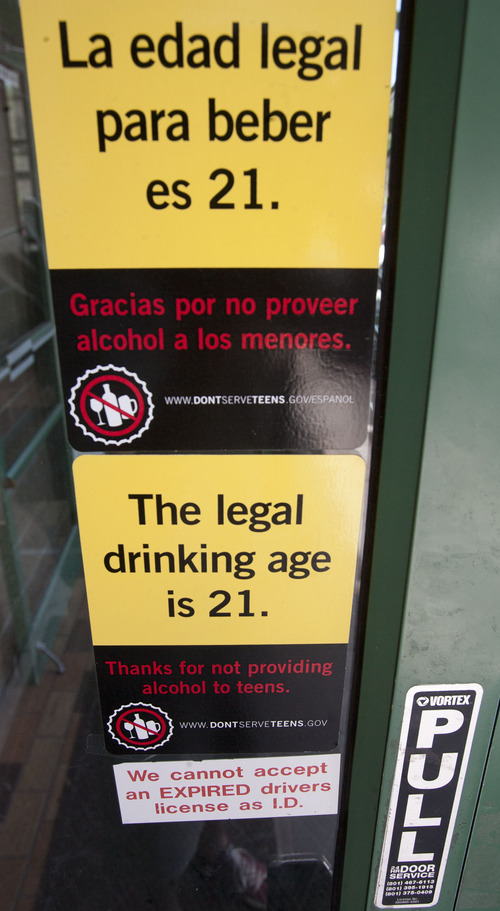This is an archived article that was published on sltrib.com in 2013, and information in the article may be outdated. It is provided only for personal research purposes and may not be reprinted.
Most Utah teenagers stay away from alcohol, but those who do drink are more likely than their peers nationwide to get blasted.
That's the finding of a new report presented to the Utah Department of Alcoholic Beverage Control. The Utah Division of Substance Abuse and Mental Health compiled the 2013 "Underage Drinking in Utah" report, which state officials use to help them set alcohol policy and improve education and advertising programs.
Alcohol use among Utah teens historically has been less than half the national rate, the report said. About 17 percent of high school seniors said they drank alcohol in the past 30 days compared with 40 percent nationwide.
But Utah teens who do drink are much more likely to binge, defined as downing five or more drinks in a row, according to the report.
"We can only speculate why kids are binge drinking," said Doug Murakami, DABC alcohol education director. "But it could be that it has to do with our culture. We might be getting a push-back. There might be some rebelliousness."
Utah's dominant religion is The Church of Jesus Christ of Latter-day Saints, which preaches against alcohol consumption.
Nationally, about 55 percent of 12th-graders who drank in the past 30 days also engaged in binge drinking, compared with nearly 72 percent of Utah high school seniors who drank.
A similar pattern emerged among Utah eighth- and 10th-graders, according to the report. Nearly 73 percent of Utah 10th-graders who drank went on a binge, compared with 54 percent of their national counterparts. Among eighth-graders who drink, nearly 85 percent binged, compared with half of drinking teens nationwide.
Despite low alcohol use by Utah teens overall, the tendency of some to drink excessively concerns state officials. It means a number of young Utahns are at risk for consequences that include alcohol dependence, delinquency, academic problems, sexual risk-taking and violence, according to the report.
Based on survey data, from 4 to 6 percent of 10th-graders and 12th-graders in Utah are estimated to need alcohol treatment. In addition, research suggests that the younger adolescents are when they first begin drinking, the more likely they are to develop alcohol dependence later in life, compared with those who begin drinking at age 21.
According to the report, the most common place for drinking teens is their own home or someone else's house — usually without permission. But 36 percent of 12th-graders who drank at home said they did so with their parents' permission and 46 percent said they imbibed at someone else's home with parental permission.
And among children most at risk for substance abuse are those who see their own parents getting drunk or abusing drugs, said Alan Cochrane, a clinical mental health counselor in Salt Lake County.
The problem cuts across all classes, he said.
Information such as this is what drives programs such as ParentsEmpowered.org, an education and media campaign aimed at discouraging alcohol use by teens.
Since 2006, Utah has spent $10 million on this and other programs. This year the funding was tied to alcohol profits, increasing typical funding from $1.4 million annually to $2 million for the budget year that began July 1.
Research shows that parental disapproval of underage drinking is the No. 1 reason youth choose not to drink, program officials said. Now that ParentsEmpowered.org has more funding, expect even more advertising campaigns aimed at helping parents understand and prevent underage drinking.









